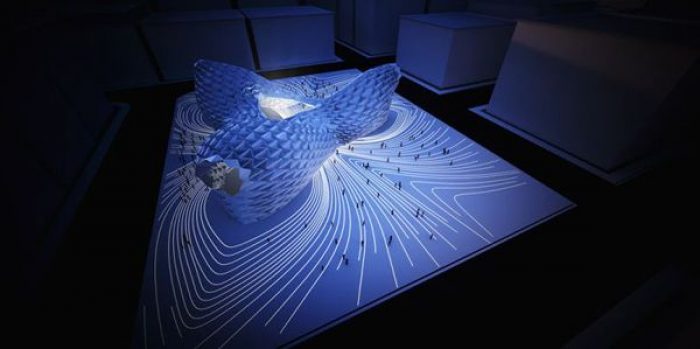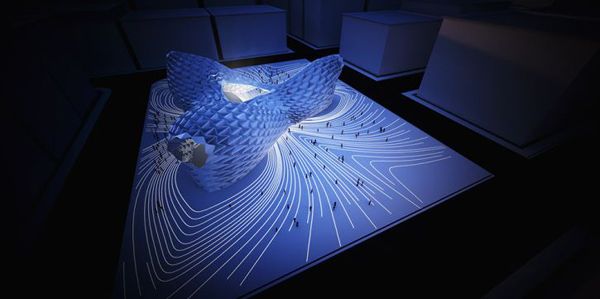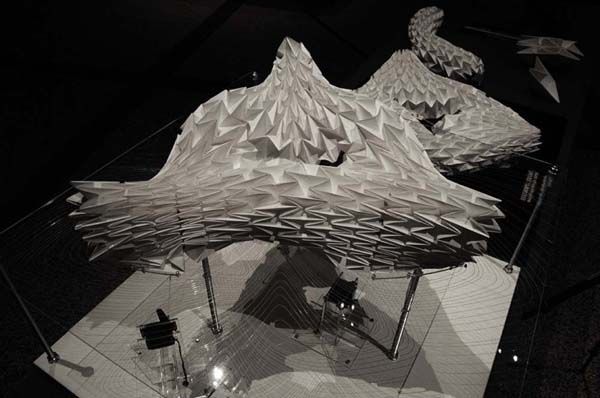Breathing Shelter by Rhina Portillo and Matthias Urschler from University of Applied Arts, Vienna, challenges the idea of envelope as a static thing. With no site in mind, the form is no longer contextual and the sole aim becomes to: design a responsive envelope that provides an ideal interior environment for a building located anywhere. The focus: envelope as controller of interior comfort.
With no site in mind, the form is no longer contextual and the sole aim becomes to: design a responsive envelope that provides an ideal interior environment for a building located anywhere. The focus: envelope as controller of interior comfort.
The envelope moves in two ways: the breathing movement and the seasonal movement. Breathing Shelter is composed of three basic modules that ‘breathe’ independently in reaction to their respective interior volumes. The shelter breathes by letting air pass through the envelope. The amount and speed of airflow is controlled to produce an optimal interior environment.The second type of movement is a seasonal one, the building volume changes between a summer mode and a winter mode. This happens by the ‘folds’ relaxing in the summer, and contracting in the winter. Therefore, the space can have two different volumes, a larger volume in the summer and a tighter volume in the winter. The reduced interior volume in the winter helps keep the temperature as high as possible, but also, the contracted folds allow snow to slide off the structure.
A space that changes shape and volume seasonally is usually an aspect of landscapes, and it is interesting seeing that temporal aspect implemented in architecture.
By Aiysha Alsane
BY: MARIJA BOJOVIC | JANUARY - 27 - 2014
BY: MARIJA BOJOVIC | JANUARY - 27 - 2014
BY: MARIJA BOJOVIC | JANUARY - 27 - 2014
BY: MARIJA BOJOVIC | JANUARY - 27 - 2014
Breathing Shelter | University of Applied Arts Vienna (Rhina Portillo & Matthias Urschler )







